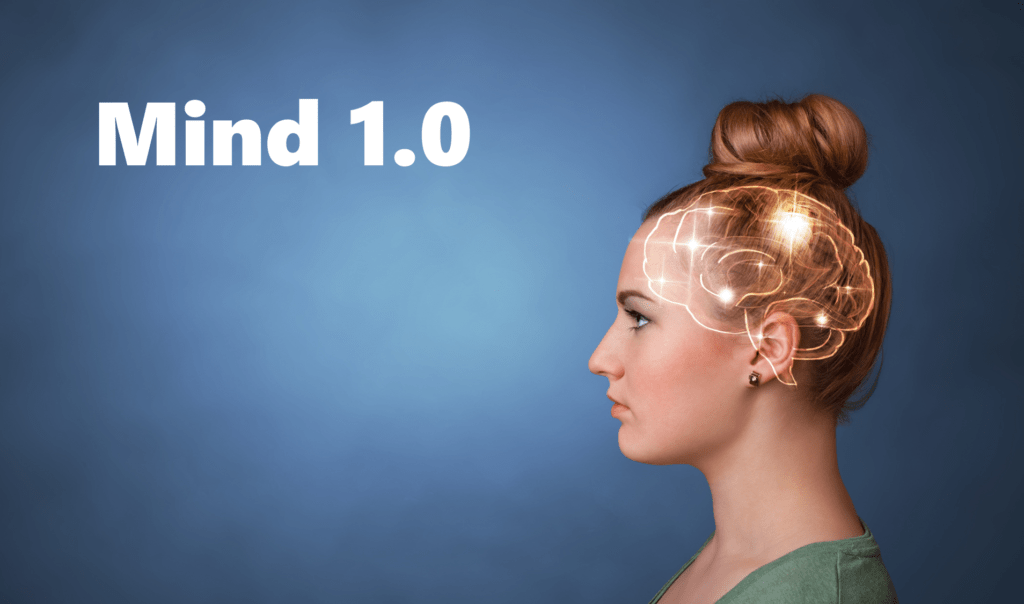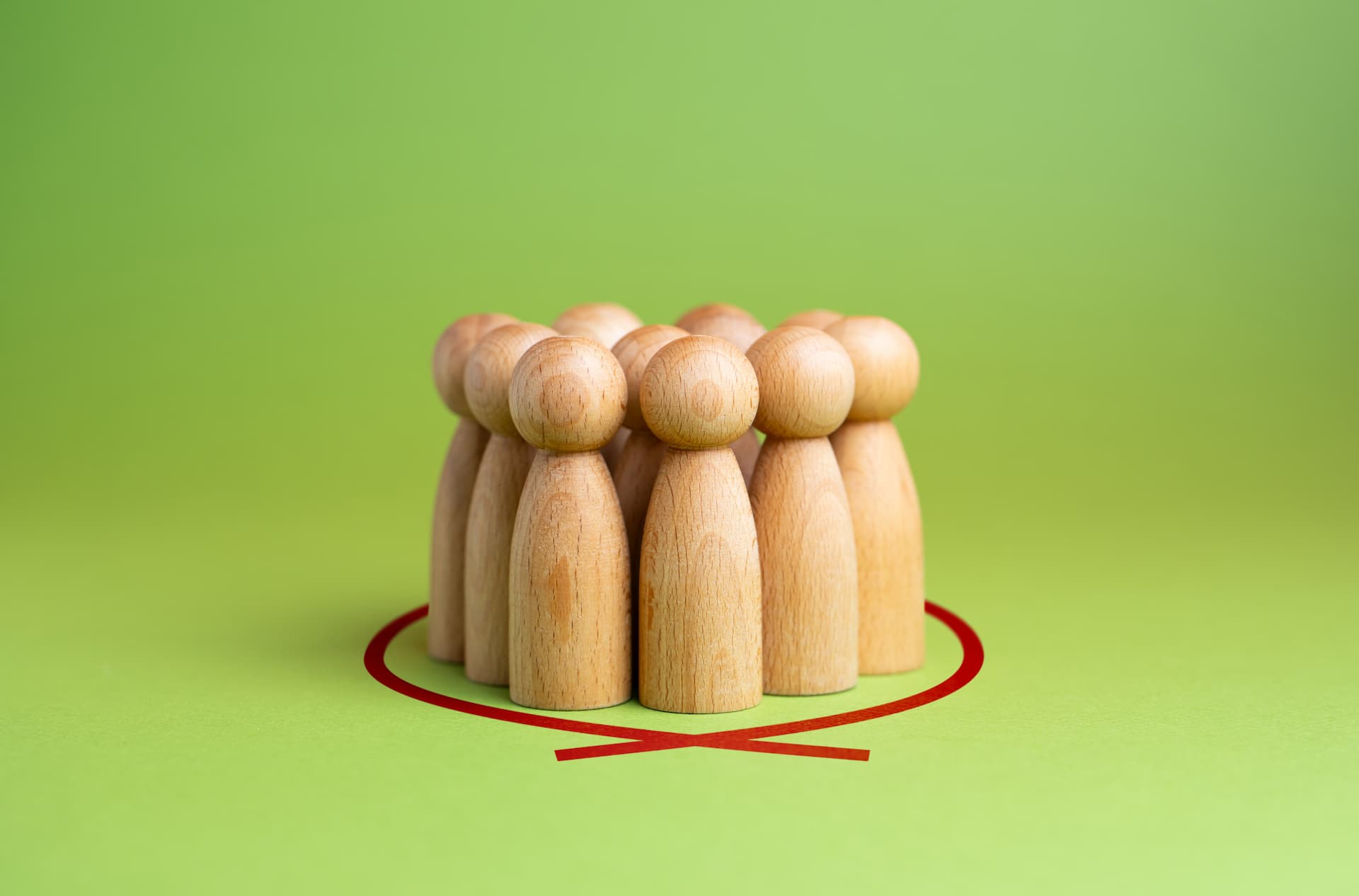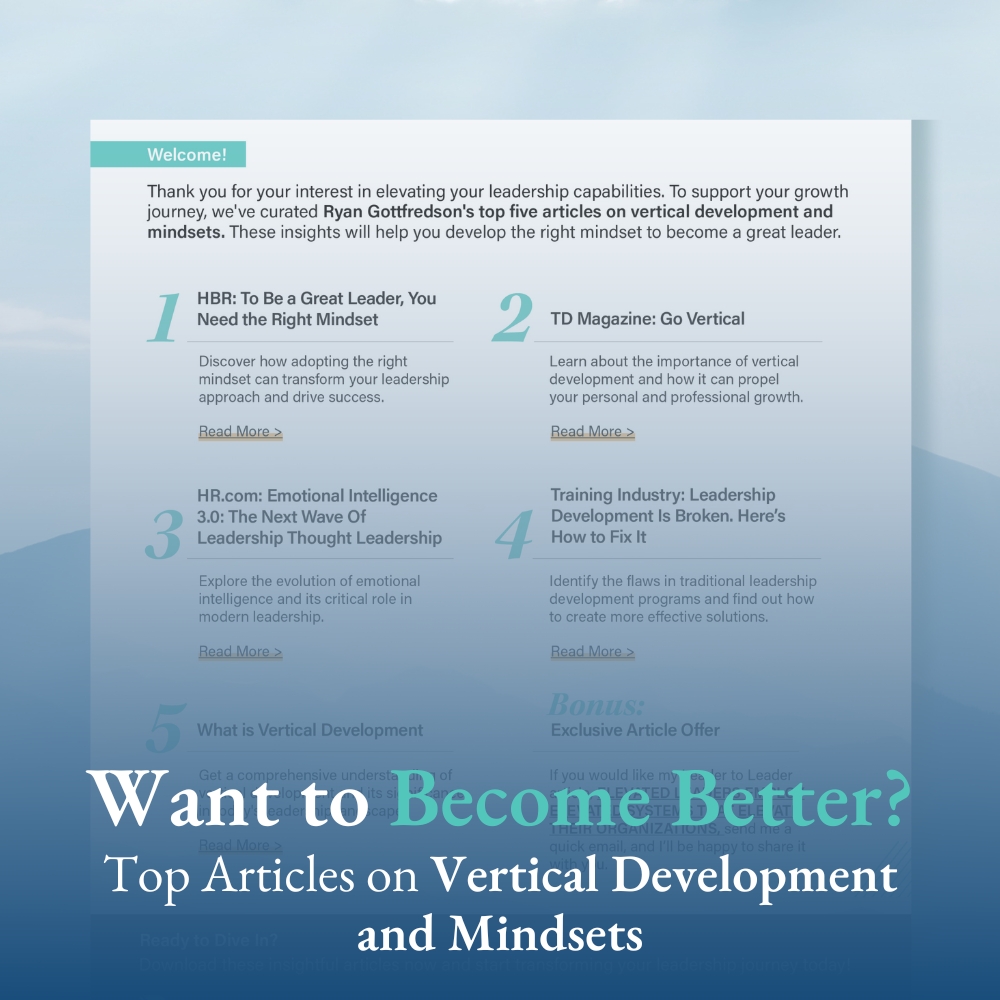Vertical development is a form of development that focuses on upgrading one’s internal operating system (i.e., becoming better). It is all about enhancing one’s ability to make meaning in more cognitively and emotionally sophisticated ways.
It differs from and is more valuable than the more commonly emphasized horizontal development, which is more like adding a program or an app to somebody (i.e., doing more).
My understanding of vertical development builds of the research and thought leadership of social scientists and developmental psychologists that include Abraham Maslow, Robert Kegan, Jan Loevinger, Lawrence Kolbert, Terri O’Fallon, Suzanne Cook-Greuter, William Torbert, Antoinette Braks, and others.
One reason I call out these individuals’ names and not others is because each of these individuals has promoted their own hierarchy of vertical development levels. Some of their vertical development hierarchies identify three levels, others five, others seven, and sometimes even more than that.
But, across all of these hierarchical frameworks, they all seem to agree on three base vertical development levels. I call them:
- Mind 1.0 (64% of all adults and 7% of executives primarily operate at this level)
- Mind 2.0 (35% of all adults and 85% of executives primarily operate at this level)
- Mind 3.0 (1% of all adults and 8% of executives primarily operate at this level)
Over the next few articles, I am going to cover each of these levels, starting today with Mind 1.0.
Mind 1.0 – Self-Preservation Mode
When we are children, our vertical development (making meaning of our world in more cognitively and emotionally sophisticated ways) is largely a function of our age. But, when we become adults, our vertical development is not a function of our age, instead it is a function of our effort. And, research indicates that 64% of all adults never go beyond the base level of adult vertical development: Mind 1.0.
When an individual is in Mind 1.0, their internal operating system is programmed to obtain two related sets of needs:
- Safety, protection, and comfort
- Belonging and fitting in (in fact, their self-worth is generally attached to the degree to which they fit in and below to the groups they are a part of)
These needs, at a very basic level, put Mind 1.0 individuals into self-preservation mode, carrying primary fears of disruption (there is safety in predictable patterns), complexity, and not fitting in.
Together, these needs and fears cause them to be on near-constant lookout for threats to their image, ego, and identity, all of which are generally wrapped up in their identification with their tribe(s) (e.g., family, religion, political party, work team). And, wanting to belong and fit in, they are focused on playing it safe, following the rules, not rocking the boat, and being agreeable. To them, they believe that if they play it safe, follow the rules, and be agreeable, that the group will like and accept them more, and therefore, they will be of greater worth.
Hallmark of Mind 1.0 People
These needs, fears, and foci cause them to be dependent thinkers. As dependent thinkers, they prefer others to do the thinking for them, they are perfectly fine becoming who others tell them to be, and their personal goals and behaviors are predetermined by others and/or the culture of their groups. This makes them rather faithful followers.
While those in Mind 1.0 probably feel self-directed, they have a difficult time recognizing the extent to which they are defined from the outside in. They have a hard time seeing how they are continuing to follow the dictates of family and cultural conditioning as voiced by parents, bosses, teachers, friends, and spouses. It is challenging for them to recognize and see this because their lack of cognitive and emotional sophistication makes it largely invisible to them.
Being dependent thinkers doesn’t make them bad people. In fact, the majority of people that we know, and possibly even ourselves, operate primarily in Mind 1.0. When I think of my parents, I think of them as salt-of-the-earth-type people, but the reality is that they spent their whole adult lives in Mind 1.0.
Other Mind 1.0 Characteristics
Being programmed to emphasize their safety and belonging, they are inclined to take on the following Mind 1.0 characteristics:
- Focused on the short-term (helps ensure immediate safety and long-term can be uncertain and scary)
- Strongly seek to avoid failing, having problems, or rocking the boat, because those are things that might lessen one’s belonging (and therefore one’s self-worth)
- Quick to conform to group norms
- Sees the world in white/black instead of shades of grey
- Are rather emotional thinkers (e.g., they are quick to get defensive when they receive constructive criticism)
- Seeks to avoid conflict
- Sees change as disrupting and bad
- Quick to stress out over ambiguity and complexity
- Quick to conform
- Doesn’t question (particularly dictated rules of cultural conditioning)
- Can have a strong sense of what is right and wrong (again, often unquestioned and based upon what their tribe(s) says is right and wrong)
- Can have a fragile sense of self (non-acceptance and criticism can be debilitating)
- Can by myopic, judgmental, and critical
- Generally, lower emotional intelligence
- Lacks initiative (would rather be told what to do) and is happy to give their power to others and to authority
- Lacks a strong sense of personal purpose (although they may have a strong sense of a group purpose)
The Dark Side of Mind 1.0
At times, those with a Mind 1.0 internal operating system, can appear outward-minded. But, at their core, they are focused on #1, and ensuring that they, their identity, and their tribe is protected and that they belong (as that is their primary sense of self-worth).
Because of this, and particularly when they are feeling threatened (either their safety or self-worth), they can be quite self-interested and can lack concern for others, particularly those different from them or outside their tribe. Their priority is their comfort, and that takes precedent over the comfort of others.
This is why, if they hear someone say something that they disagree with or goes against the tribe (perhaps think religion or political party), they quickly come to the defense of the tribe without fully considering if there is any merit behind the disagreement.
When you study any civil rights movement, it is easy to see that much of the in-power group operated from a Mind 1.0 defensive posture, and the out-of-power group tirelessly work to help the Mind 1.0 in-power group see outside of themselves and in a more cognitively and emotionally sophisticated way.
Mind 1.0 Leaders
When a Mind 1.0 person is put into leadership, the leader will likely operate from one of two extremes.
One extreme is that they will be a strong people-pleaser, consistently seeking the acceptance of those they work with. When they operate as a people-pleaser, they avoid evaluating others, they are not inclined to give feedback or constructive criticism, and they avoid difficult conversations and even making decisions.
But, another extreme is that they will be a strong controller, because by being in control, they are better able to ensure their safety. Such leaders hate ambiguity and complexity, and being in control is a way to avoid such things. When they operate in this extreme, they generally demand loyalty and they stick strongly to the culture, structure, and plan. They probably do not feel psychologically safe themselves, so it is tough for them to promote psychological safety.
But, Mind 1.0 people, if given the choice, would generally rather avoid leadership altogether.
Summary
Research has found that the majority of people primarily operate with a Mind 1.0 internal operating system. If you look around you and find Mind 1.0 people, you will see some that possess very great qualities (e.g., being friendly, sociable). But, you will also likely see that they don’t operate at a level that is very cognitively or emotionally sophisticated. And, you will likely also notice that when their group or their self-worth feels threatened, some uglier characteristics can come out. For them, this helps them protect themselves, and they can be so focused on protecting themselves that they are unable to fully see and understand the possible negative effect they are having on others.
But, the good news is that we can elevate. We can grow in our cognitive and emotional sophistication.
For me, I love learning about these different levels of vertical development because it helps me to more clearly see where I am at and where I can go to become a better version of myself. I hope you feel similarly. I look forward to covering Mind 2.0 and Mind 3.0 in the coming weeks.
If you are interested in learning more about vertical development, I think you might enjoy this white paper: Vertical Leadership Development.










